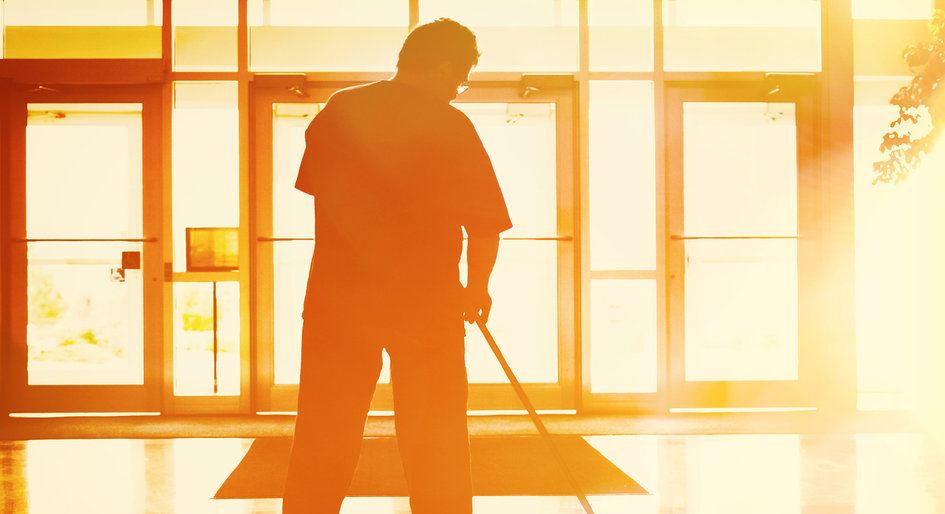As more companies open their doors, allowing staff back to work, and with many students attending school in-person, it is important to recognize that our health and safety may compromise the wellbeing of sanitation staff.
Increased cleaning frequencies, heavy waste removal due to the use of more disposable commodities (i.e. masks, gloves, sanitation containers, etc.) and potentially heavy and/or old equipment mean the bodies of these essential workers are taking a beating. To keep them safe at work, ergonomic impacts and strategies should be under the microscope to minimize WSIB claims due to physical injury.
The following are some considerations to help ensure facilities are cleaned to expected standards without a negative backlash on the workforce:
Staffing and scheduling
Before COVID-19, most cleaning schedules had a rotation that occurred on a weekly, monthly and annual time frame to ensure all surfaces, equipment and amenities were properly cleaned without negatively impacting physical demands of the employees and, thus, injury rates. With COVID-19, those standards have increased, in some cases dramatically for the protection of staff and public alike.
In many cases, independent high-touch surfaces are being cleaned as frequently as each use, central high-touch surfaces are cleaned twice per day and low-touch surfaces are cleaned daily. Cleaning staff might experience significantly higher levels of awkward postures with the increased repetition they are required to adopt.
Many organizations have taken steps to increase their staffing to ensure that the impacts of higher repetition and manual handling required to maintain the new COVID-19 sanitation standards does not also cause an increase of injuries for their workers.
That being said, it is important to ensure that the scheduling of tasks/duties is given a thorough review in an attempt to rotate muscle groups and similar activities to provide active muscular rest breaks throughout an employee’s shift. For instance, surface cleaning rotating with waste removal allows the impact to upper limbs during surface cleaning to rest while lower limbs and back are activated in the rotation of more manual work.
Equipment
If it hasn’t been done already, and many organizations are doing a fabulous job of this, now is the time to review and audit the equipment being provided. Old, heavy and worn equipment, such as sanitation carts, mops, vacuums and even spray bottles, can be a huge source of additional force, stress and strain for a worker. Look to replace these pieces with lightweight, expandable/adjustable and automated options that will require less effort to use and allow employees to work safely but efficiently.
Training and technique
Everyone develops bad habits, but when work demands increase, poor work habits need to go. Providing regular training on ergonomic principles related to cleaning duties can be a reset for many long-term employees and a way to set the tone for healthy habits for new workers. Interactive training sessions disseminate core ergonomic awareness and allow staff members to share principles for working smarter not harder.
Self-assessments
Helpful daily reminders, especially while trying to retrain the mind and body on new or r work methods, is also highly important for ensuring sustainable habits.
Developing self-assessment checklists that become mental reminders of key ergonomic principles addressing poor postures and reducing repetition and forces can be a highly effective follow up to any training or procedural practices that are in place.
Protecting sanitation workers from injury is not only a social responsibility but an operational imperative. If facilities are unable to meet the stringent sanitation requirements because staff members are unable to work due to work-related musculoskeletal disorders, then moving forward and staying open may become a challenge.
Reviewing the aforementioned areas can lead to great strides in lowering injury potential, even when work demands increase, and can offer a foundation for an impressive ergonomics and health and safety program for the future.
Alexandra Stinson R.Kin., CCPE is a Certified Professional Ergonomist and Co-Owner of PROergonomics. With over 20 years’ experience across North America, she excels in solving diverse ergonomic challenges, lowering injury claims and developing sustainable ergonomics programs, policies and training programs. PROergonomics prides itself on a professional experience that is focused on a proactive, preventative ergonomics model that helps organizations move past a reactive claims driven approach.




